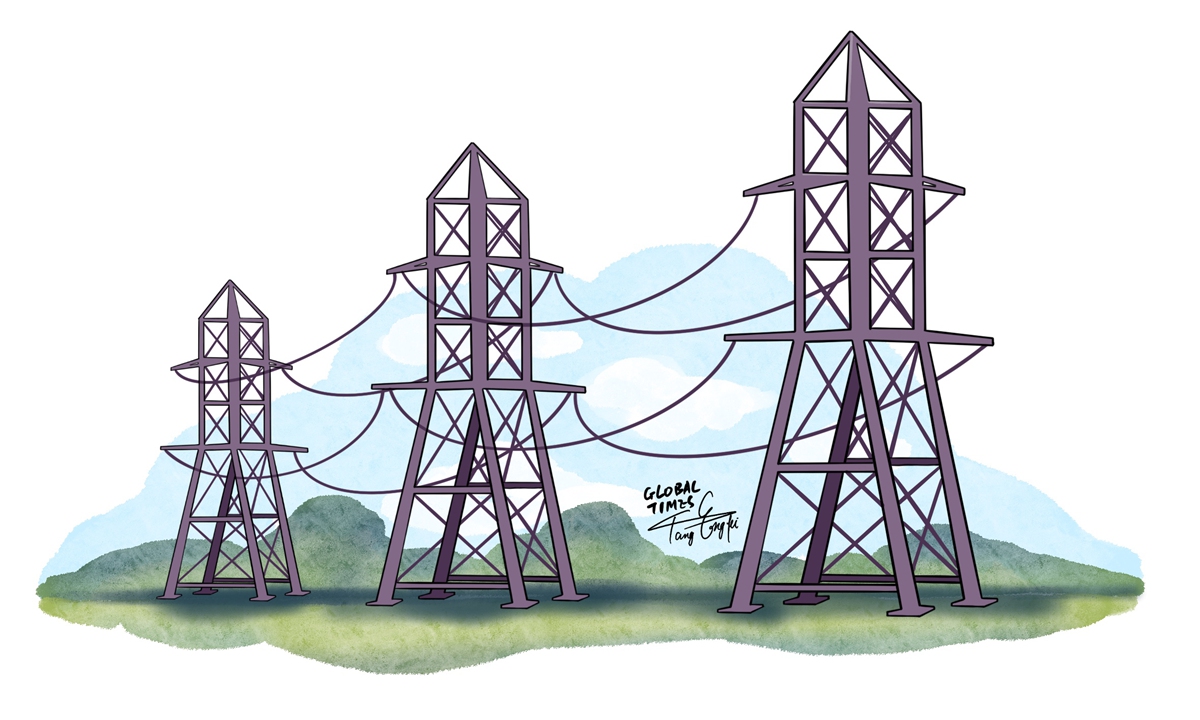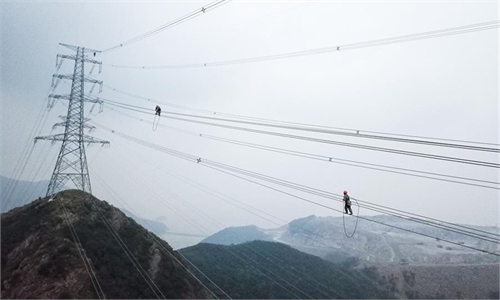COMMENTS / EXPERT ASSESSMENT
Nation knows how to overcome temporary economic difficulties

Tang Tengfei/Global Times
Soaring coal prices are tightening up supply of coal and electricity in many countries, including China. Some regions in China have experienced power rationing, becoming catnip for some Western media outlets to exaggerate the impact of a power shortage on China's overall economy.Steam coal futures on Tuesday increased 4.52 percent, soaring more than 50 percent over the past seven trading sessions. The prices have doubled comparing to early September and more than three times higher than in the beginning of the year.
Skyrocketing coal prices are mainly driven by three factors. For starters, with an efficient control over the novel coronavirus, China's role as the world's largest manufacturing hub has become even more prominent as the world gradually enters a post-COVID era. Surging export orders have mounted pressure on energy consumption.
Secondly, China has announced to have CO2 emissions peak before 2030 and achieve carbon neutrality before 2060. Energy transformation is an undoubtedly a tough task which needs a comprehensive plan and constant refinement. During the promotion of the agenda, China's management of energy supply still needs to be enhanced so as to cope with growing market demand for electricity.
In addition, against the backdrop of energy transformation, investment in coal production and coal power generation has been greatly reduced over the previous years, with growth of production capacity lagging behind.
As winter approaches, the coal price may remain at a relatively high level, but is expected to gradually return to normal condition in about four to five months.
In order to meet the coal demand, China has rolled out measures to boost domestic production and expand import from Russia, Mongolia, Indonesia, Kazakhstan and other nations. Daily coal production across the country has exceeded 11.5 million tons recently, increased more than 1.5 million comparing to mid September, according to media reports.
Local economic planners have been instructed to promote the signing of medium- to long-term supply contracts of thermal coal which can guarantee the transport capacity and ensure an effective connection between production and transportation.
Of course, Western media have done their upmost to overplay the severity of power shortages. The overall supply of electricity is not a problem in the country which, in fact, has registered outstanding performance in power supply in many years. Temporary power outages may be news in China, but it has been a common situation in many other countries, including the US.
There's no denying that the recent power rationing and energy supply problem acted as an important juncture for the country to shore up its ability to coordinate its energy supply and adjust its energy transformation plans, but it by no means equates to the stalling of China's overall economic recovery.
On Monday, China released its third quarter gross domestic product (GDP) growth rate at 4.9 percent year-on-year. The lower-than-expected quarterly growth did reveal some problems which need to be addressed, but the Chinese economy remains on a positive trajectory and an eight-percent growth for the year is envisioned.
The positive fundamentals and an overall amazing 9.8 percent growth in the first three quarters has proved the resilience of Chinese economy, not to mention that Chinese enterprises have developed advantages in operational flexibility.
The global economy is going through a tough time and China is one of the most important powerhouses to drive the recovery. Challenges are never absent alongside the growth of Chinese economy, but it also have proved China's strong ability to overcome temporary difficulties.
The article was compiled based on an interview with Han Xiaoping, chief analyst at energy industry website china5e.com. bizopinion@globaltimes.com.cn



